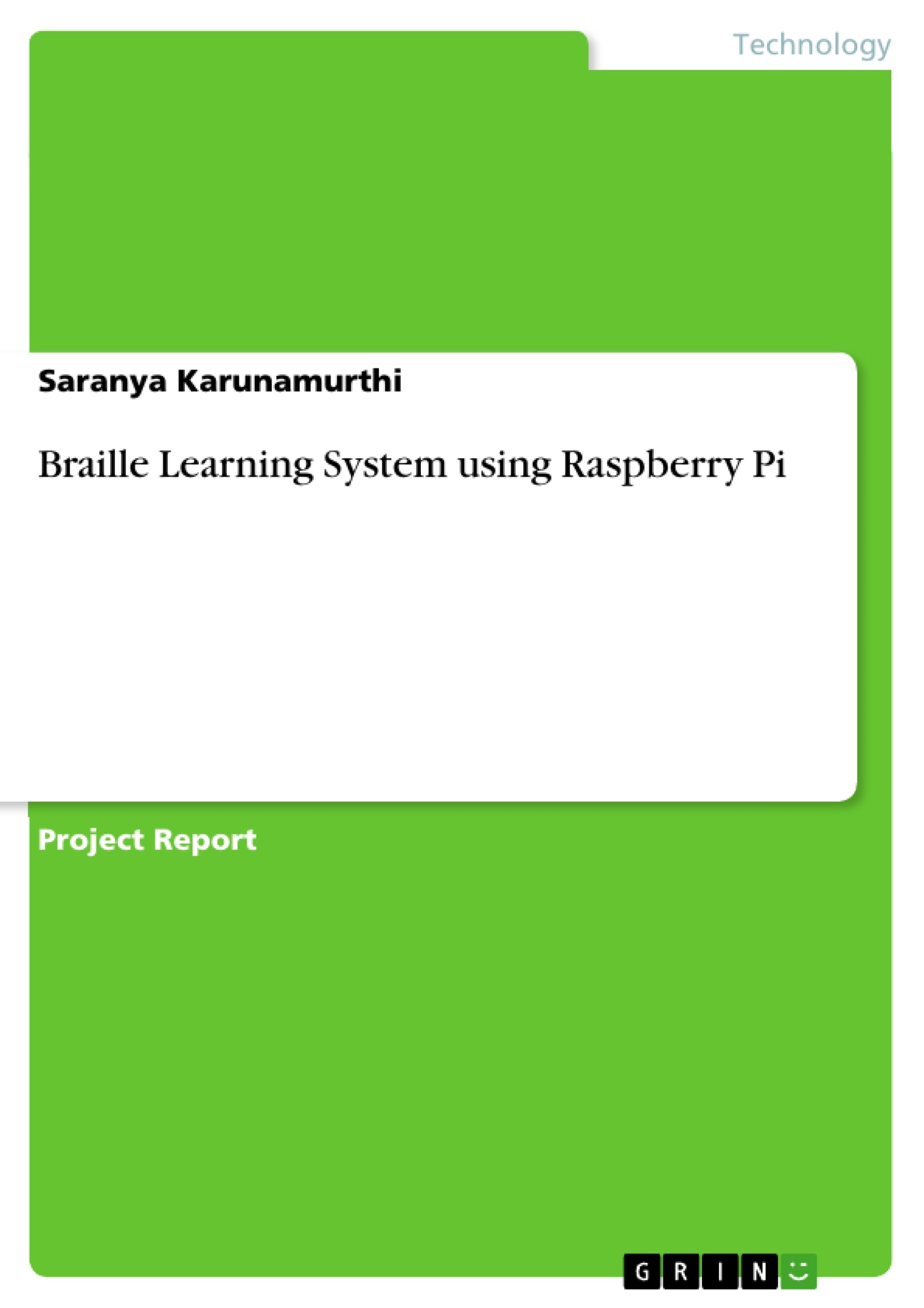This project helps in simplifying the process of learning of braille instructions. The integration of physical activity and hearing can facilitate easy learning of Braille Script. In this project we develop a kit which helps the blind and visually impaired people to learn braille even in the absence of teachers.
Braille literacy is crucial for blind individuals, as it enables life-long learning and is key to employment and independency. One way to promote Braille literacy is to make existing Braille reading devices more accessible, affordable, and user friendly. Commercially available Braille reading devices in this regard need various improvements. Most of these devices cost thousands of dollars, mainly because they rely on multiple piezoelectric actuators in order to create the Braille letters.
Other issues include high voltage actuation and reduced portability. In order to solve these issues and improve existing Braille displays, various actuation methods have been widely investigated.285 million people are estimated to be visually impaired worldwide, 39 million are blind and 246 have low vision. India has the largest population of blind people in the world. That's over 12 million people. Even the central and state government provide job opportunities for blind and visually impaired people. But only few vacancies are filled due to lack of education. Lack of education for blind people is due to the lack of qualified teachers to teach them Braille. Learning the Braille script is not an easy task for Visually Impaired students. Visually Impaired students have to memorize various patterns of keys of Braille matrix assigned for different letters/words/symbols in Braille script to read and write effectively.
Inhaltsverzeichnis (Table of Contents)
- CHAPTER 1
- 1.1 BLOCK DIAGRAM
- 1.2 ABOUT BARILLE
- 1.3 BRAILLE STRUCTURE
- 1.4 IMPORTANCE OF BRAILLE
- 1.5 BRAILLE IN DAY TO DAY LIFE
- 1.6 BRAILLE SYMBOLS
- 1.6.1 THE BRAILLE ALPHABET
- CHAPTER 2
- CHAPTER 3
- 3.1 Raspberry Pi 3 Model B
- 3.1.1 PINDIAGRAM
- 3.2 SOLENOID ACTUATOR
- 3.3 TRANSISTOR TIP122
- 3.4 DIODE 1N4007
- 3.5 RESISTOR 1K
- CHAPTER 4
- 4.1 7812 REGULATOR..
- 4.2 CAPACITOR 470uF
- 4.3 TRANSFORMER
- 4.4 REGULATED POWER SUPPLY WORKING
- 4.4.1 THE POSITIVE HALF-CYCLE
- 4.4.2 THE NEGATIVE HALF-CYCLE
- CHAPTER 5
- 5.1 CIRCUIT DIAGRAM OF CONTROL UNIT
- 5.2 CIRCUIT EXPLANATION
- 5.2.1 OPEN CIRCUIT CONDITION OF SOLENOID ACTUATOR.....
- 35.2.2 CLOSED CIRCUIT CONDITION OF SOLENOID ACTUATOR
- 5.3 CIRCUIT DIAGRAM OF POWER SUPPLY
- 5.3.1 IC 7812
- 5.3.2 CAPACITOR..
- CHAPTER 6
- 6.1 INTRODUCTION
- 6.2 SOFTWARE PACKAGES
- 6.2.1 FESTIVAL
- 6.2 2 FLITE
- 6.2.3 Espeak
- 6.3 AUDIO CONFIGURATION
- 6.3.1 DESKTOP VOLUME CONTROL
- 6.3.2 COMMAND LINE
- 6.3.3 RASPI-CONFIG
- 6.4INSTALLATION FLITE PACKAGAE
- CHAPTER 7
- 7.1 POWER SUPPLY DESIGN
- 7.2 BRAILLE CHARACTER SIZE
- 7.3 ADVANTAGES OF THE BRAILLE KIT
Zielsetzung und Themenschwerpunkte (Objectives and Key Themes)
This project aims to develop a cost-effective and user-friendly Braille learning kit for blind and visually impaired individuals, especially in regions like India where there is a high population of visually impaired people and limited access to qualified Braille teachers.
- The importance of Braille literacy for blind individuals, particularly in relation to education, employment, and independent living.
- The challenges of existing Braille reading devices, including cost, accessibility, and user-friendliness.
- The development and implementation of a Braille learning kit utilizing a Raspberry Pi 3 and solenoid actuators.
- The integration of physical activity and hearing into the learning process to facilitate Braille acquisition.
- The potential for this kit to improve Braille literacy and empower blind and visually impaired individuals.
Zusammenfassung der Kapitel (Chapter Summaries)
- Chapter 1 introduces the concept of Braille, its structure, importance, and usage in daily life. It also discusses the Braille alphabet and symbols.
- Chapter 2 provides a review of existing literature on Braille learning and related technologies.
- Chapter 3 describes the hardware components of the Braille learning kit, including the Raspberry Pi 3 Model B, solenoid actuators, transistors, diodes, and resistors.
- Chapter 4 focuses on the design and function of the power supply system for the kit, including the 7812 regulator, capacitor, transformer, and the working principle of the regulated power supply.
- Chapter 5 delves into the circuit diagrams of the control unit and power supply, explaining the different circuit conditions of the solenoid actuator and the functions of the IC 7812 and capacitor.
- Chapter 6 explores the concept of text-to-voice synthesis, describing software packages like Festival, Flite, and Espeak, as well as audio configuration methods for the kit.
- Chapter 7 discusses technical challenges encountered during the design process, focusing on power supply design, Braille character size, and the advantages of the Braille kit.
Schlüsselwörter (Keywords)
Braille literacy, visually impaired, accessible technology, Raspberry Pi, solenoid actuators, text-to-voice synthesis, Braille learning kit, inclusive education, assistive technology.
- Arbeit zitieren
- Saranya Karunamurthi (Autor:in), 2018, Braille Learning System using Raspberry Pi, München, GRIN Verlag, https://www.grin.com/document/440197



